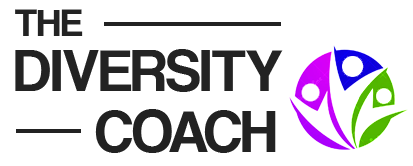Scott Page And R. Roosevelt Thomas, Jr.: Two Theories Of Diversity Management

Diversity management is a relatively new theory of organizational management, based on the observation that many organizational leaders are not equipped to manage the diverse populations of the current workplaces and marketplaces (Thomas, 1990). As business becomes more globalized and complex, diversity management will play a more important role in the workplace.
I have worked in diversity management for three decades, and I have seen the field ebb and flow in the interests of corporations, universities, professional services firms, and nations. There is much work to do if the theory of diversity management is ever to become a practical tool for managers looking
to produce world-class results in the 21st century.
To this end, I turn to the diversity management theories of two luminaries: Dr. R. Roosevelt Thomas, Jr., and Dr. Scott Page.
Diversity Management According to Thomas
Dr. R. Roosevelt Thomas, Jr. initiated the diversity management movement in 1985. Dr. Thomas based his theory of diversity management on direct observations of the changing attitudes of young college students. He translated these observations into a theory of the nature of talent management in a changing world.
Dr. Thomas’s theory of diversity management involves a few basic tenets regarding the relationship of increasing diversity to improving business outcomes. His work states, among other things, that:
- Managing the inevitable diversity of the changing workforce is an essential skill for both managers and leaders;
- Better business results are the goal of diversity management;
- Diversity management allows everyone to contribute naturally to organizational goals;
- Successful diversity management does not privilege one group to the disadvantage of other groups.
When Dr. Thomas outlined these simple principles, he sparked intense interest in the executives of hundreds of corporations seeking new insights into the changing demographic profiles of their companies. Organizations as diverse as Proctor & Gamble, Avon, Corning, Digital Equipment Corporation, and Xerox, accepted and endorsed Dr. Thomas’s theory.
Diversity Management According To Page
Arriving on the scene of diversity management many years after Dr. Thomas, Dr. Scott Page stumbled into a theory of diversity management as a result of his intense work in complex problem solving and prediction. Whereas Dr. Thomas based his theory on observation, Dr. Page expanded the theory of diversity management by conducting experiments in group responses to complexity.
Dr. Page’s diversity-prediction and diversity-trumps-ability theorems are based on the dynamic behaviors of groups in the process of problem solving, predicting, innovating, decision-making, and managing complexity (Page 2007).
Like Dr. Thomas, Dr. Page formulated a set of principles regarding diversity management, which are as follows:
- Increased problem complexity drives the need for more diversity in the problem-solving group.
- Diversity is not limited to superficial characteristics; it involves diverse perspectives, heuristics, categories, and models.
- A logical approach to diversity management must rely on math, science, and empiricism, not anecdote and metaphor.
- Problem-solving groups made up of diverse problem-solvers will outperform problem-solving groups made of the best problem-solvers of non-diverse backgrounds.
- Diversity trumps ability.
Dr. Page substantiated all of his claims through extensive experiments and testing. Dr. Page’s use of the scientific method to evaluate the efficiency and effects of diversity allowed him to create a set of diversity-management processes, which can be replicated in real-world situations to get the most value out of diverse groups.
Turning Theory Into Practice
The separate but complementary diversity-management theories of Dr. Thomas and Dr. Page both take time to digest, as all academic theories do. Managers only rely on academic theories after someone has developed a process that helps managers practically apply the concepts to produce better results (Rodgers, 2014, March 5).
For thoughtful insights and new trends in the field of diversity, follow me on Twitter.
In my experience, academic theories follow a predictable pattern of acceptance. People are initially excited about the theory, followed by a period in which people can only express belief in the merit of a theory. In the next phase, the theory’s reputation declines in the public eye, and the theory itself is put on the shelf and ignored. Eventually, the theory is revived and developed for practical application, following the onset of some dramatic change.
Theorists do not develop ideas for the express purpose of redefining work. Rather, they do so to offer insight into human behavior, thought patterns, learning abilities, and general development. A practitioner must come along to turn valuable theories into practical models, tools, or principles that managers can easily use.
Diversity management is ready for theory to become practice, based on the principles of Dr. Thomas and Dr. Page. The complex evolution of the workforce requires a new methodology, and practitioners like myself are finding ways to translate the theories of diversity management into new practices.
Diversity Needs Management
Studies show that unmanaged diversity diminishes organizational performance. But diversity is an inevitable reality of the new workforce. It takes efficient management to get the best performances from diverse workplaces.
There was a serious flaw in prior works of diversity management. Researchers assume that the target companies knew how and were properly practicing diversity management in order to improve organizational results. The problem is that, until recently, the tools necessary to practice proper diversity management have not been available.
In order to ensure that managers have access to these tools, future research should revolve around one question: what do managers need to know and/or do to consistently practice diversity management as an effective discipline?
Over the last three decades, the theories of diversity management have evolved and solidified. While the advantages are self-evident, organizations need the tools, resources and knowledge to manage their diverse workforces in order to see those advantages in action.
